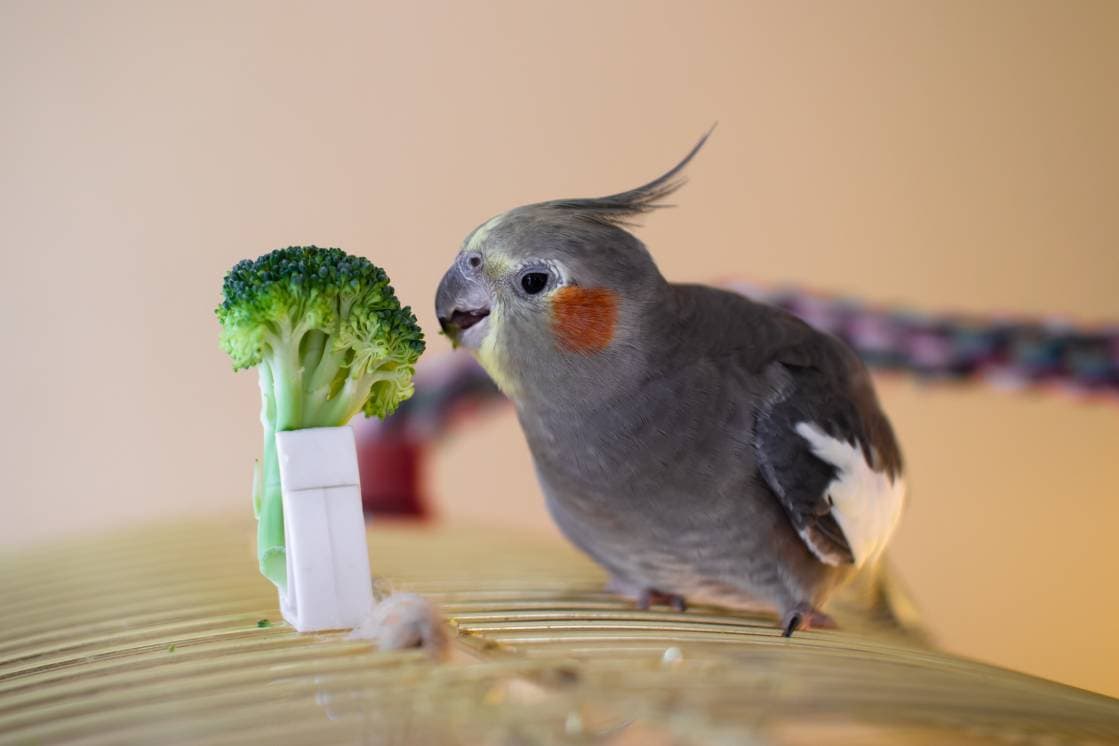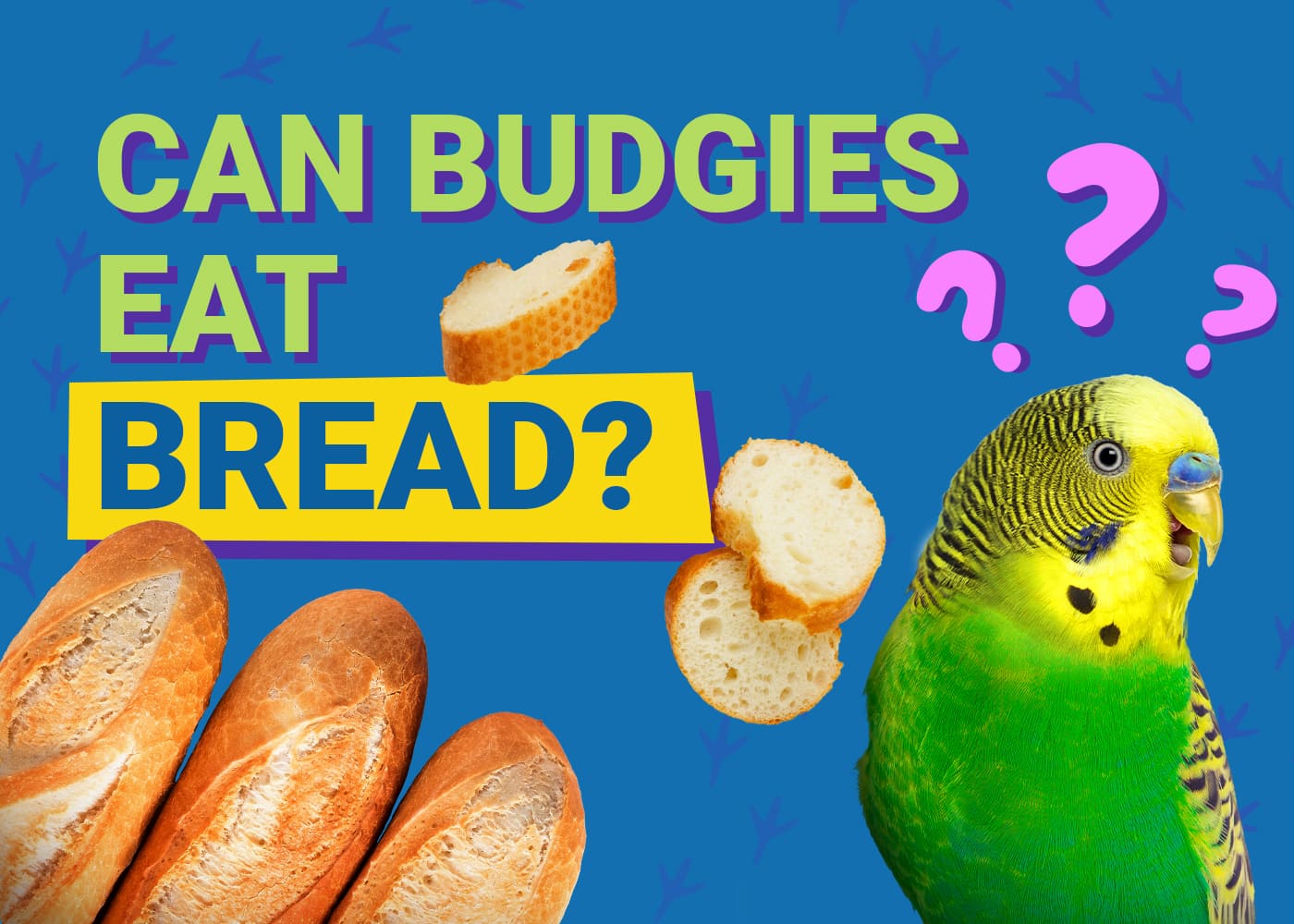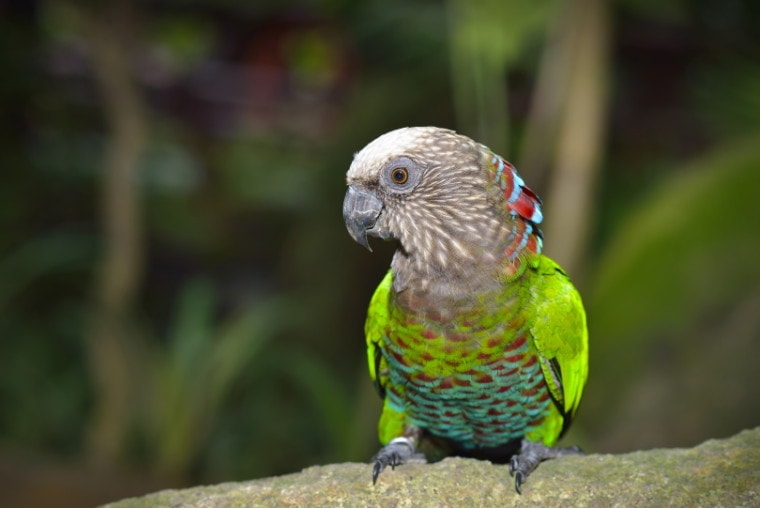
Striking in appearance and only rarely found on the pet bird market, hawk-headed parrots are truly one-of-a-kind. Not the bird for an inexperienced keeper, these parrots will make you work to be their friend! Read on to learn more about the colorful hawk-headed parrot, what you need to know to care for one, and why they are best for experienced bird owners.
Species Overview
| Common Names: | Hawk-headed parrot, Red fan parrot |
| Scientific Name: | Deroptyus accipitrinus |
| Adult Size: | 12-14 inches long |
| Life Expectancy: | 30+ years |
Origin and History
Hawk-headed parrots are native to the Amazon region of South America. Their range includes parts of Brazil, Colombia, Peru, and Ecuador, among other countries. These birds live in humid, tropical forests and plains throughout their range.
One of the earliest parrot species to be described scientifically in the mid 1700s, hawk-headed parrots were first exported as pets in the 19th century.
Wild hawk-headed parrots are social, often living in groups of 4-7 birds. They forage for a variety of foods including fruits, seeds, and nuts. While they are currently not listed as endangered, loss of habitat and the illegal pet trade poses a threat to the future survival of this species.
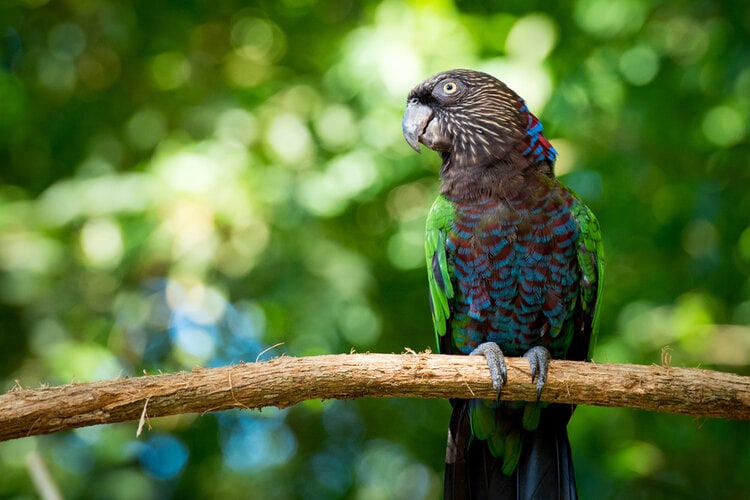
Temperament
Hawk-headed parrots have temperaments that can most accurately be described as complicated. Like many parrots, they can be playful and outgoing, entertaining their owners with their antics. However, they are also prone to throwing temper tantrums and trying to boss their owners or other birds around.
The unpredictable nature of hawk-headed parrots makes them a pet best suited for experienced bird owners. Bonding with and socializing this bird calls for patience and knowledge but once accomplished, hawk-headed parrots can make fine pets.
Some birds will bond closely with only one person while others are friends to the whole family. They aren’t the type to shower their owners with love, instead carefully picking and choosing their moments to be affectionate.
Once their trust and affection are earned, hawk-headed parrots are intelligent and trainable, curious, and even cuddly at times. They are most tame when they are young, offering the best opportunity for forming a lifelong bond during these early years.
Speech & Vocalizations
Hawk-headed parrots make a variety of different sounds, ranging from quieter chattering to loud screeching and whistling. Compared to other pet birds, they aren’t considered an overly noisy species. However, when they are angry or afraid, hawk-headed parrots won’t hesitate to express their feelings at the highest volume possible.
Hawk-headed parrots are capable of learning to imitate human speech and other sounds. They are smart enough to pick up words even from a young age.
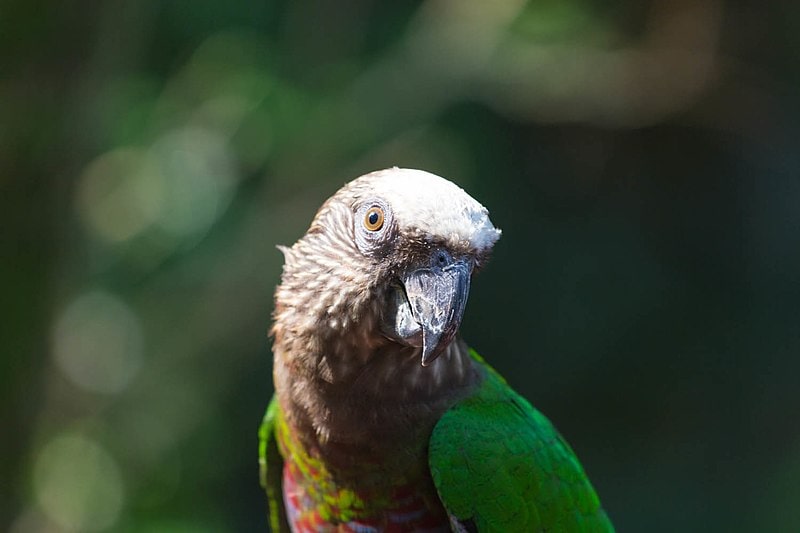
Hawk-Headed (Red Fan) Parrot Colors and Markings
These parrots are colorful and unique in appearance. Males and females look identical, with green wings, tails, and back. Their belly and neck feathers are red and gray with blue edges. A cream and brown face with a gray bill and yellow eyes complete their features.
Hawk-headed parrots earn their other common name, red fan parrot, by a specific behavior. When excited, scared, or angry, these birds raise the feathers on the back of their neck, creating a fan shape around their heads.
Caring for the Hawk-headed (Red Fan) Parrot
Housing
At 12-14 inches long, hawk-headed parrots are smallish compared to other Amazon parrot species. A good cage size for these birds is one 24 inches tall and wide and at least 30 inches tall, with bars 1 inch apart. The cage should be kept away from cold, drafty spots or potentially dangerous kitchen fumes.
Hawk-headed parrots aren’t as needy as other parrot species and can entertain themselves happily in their cage if it’s properly outfitted. Give your bird several perches and a variety of toys, including chew and puzzle toys. The cage should also contain food bowls and a clean water source. Spot clean the cage daily to help avoid any potential health problems.
Although fairly social birds, the bossy and dominant nature of the hawk-headed parrot can make them tough housemates for other feathered friends.
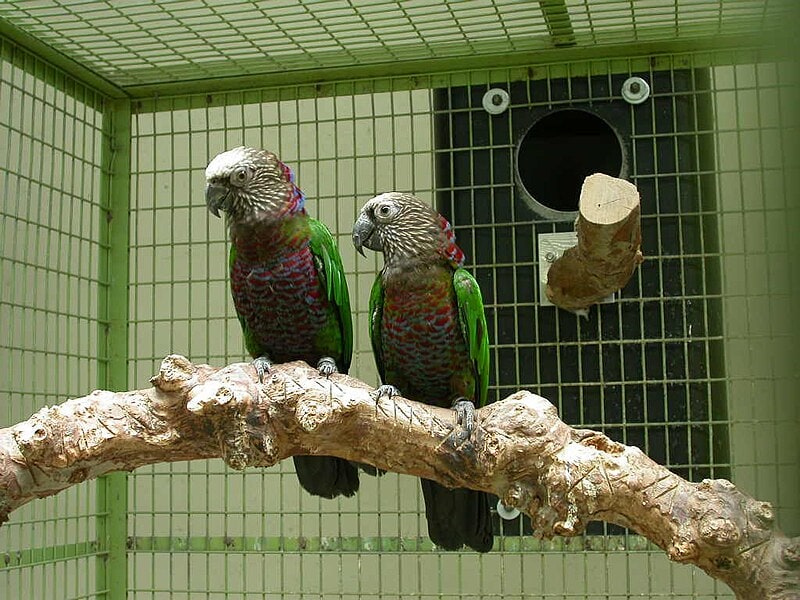
Grooming
To keep their skin and feathers healthy, hawk-headed parrots need regular misting or access to a birdbath. Their wings, beak, and nails should be kept trimmed as well. A veterinarian or groomer can perform these tasks or even teach you how to cut your bird’s wings and nails on your own if you’re so inclined. It’s not recommended that you try to trim your bird’s beak at home.
Common Health Problems
Because of their high-strung nature, hawk-headed parrots may develop self-mutilation and feather-picking problems. These behavioral issues can lead to further medical problems like skin infections or wounds.
Hawk-headed parrots can suffer the same common health problems as other pet birds including the following:
The best way to keep your bird healthy is to keep them and their cage clean and feed a healthy diet.
Signs of illness in a hawk-headed parrot include loss of appetite, decreased activity, disheveled appearance, or raspy breathing. Any concerning symptoms such as these call for a call or visit to the veterinarian. Healthy birds should get regular check-ups and other preventative care recommended by your vet.

Diet and Nutrition
A good quality pellet food should make up the bulk of a hawk-headed parrot’s diet. Nutritionally, they need a higher fat content and plenty of vitamin A to stay healthy. Supplementing their pellets with nuts and various fruits and vegetables can help provide these important nutrients. Dark, leafy greens and fruits such as peaches and cantaloupe are good choices. Other foods that can be offered include grains, lean meats, and legumes.
Exercise
Hawk-headed parrots are active and playful birds. Well-socialized and bonded birds will enjoy spending time out of their cage and with their humans. Creative hawk-headed parrots should be provided with safe playthings that provide a mental challenge, such as puzzle toys. They also enjoy climbing, swinging, and hanging upside down, so a bird gym would be a nice option for them.
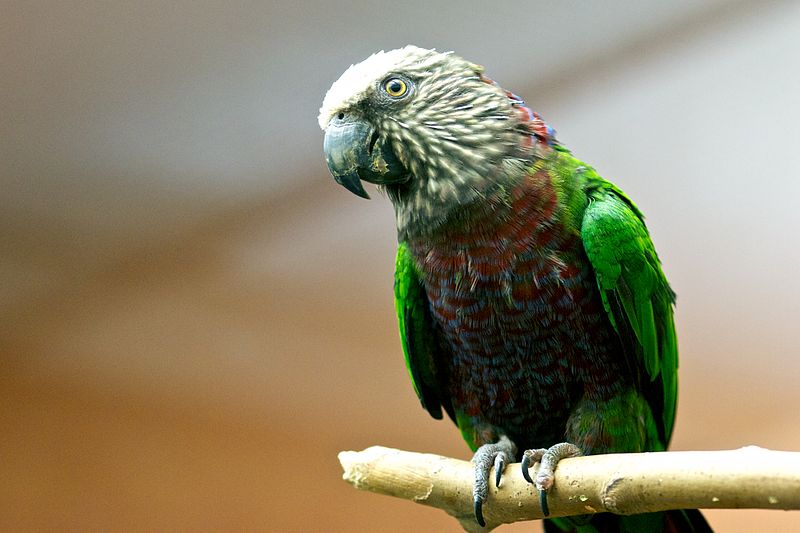
Where to Adopt or Buy a Hawk-Headed (Red Fan) Parrot
Because they don’t breed well in captivity, hawk-headed parrots are rare and hard to find for sale. Most likely you’ll need to find a breeder to buy from as these birds aren’t often found in pet stores. Expect to pay a higher price for a hawk-headed parrot, especially females. The average hawk-headed parrot prices are reportedly $1,800-$2,400 but a cost as high as $8,000 is possible as well.
Due to their rarity, finding a hawk-headed parrot for adoption might be difficult. However, the combination of their tough personalities and long lifespan definitely could lead to these birds needing to be rehomed. Check for exotic bird rescues in your area or online to look for adoptable hawk-headed parrots.
In Conclusion
Hawk-headed parrots are a pet that can be both entertaining and infuriating, often on the same day! With patience and gentle handling, these feathered bundles of emotion might just choose you to be their person for as long as they live. Make sure you have the time and money to invest in these rare birds before you make the effort to search one out for sale.
Related Reads:
- Why Do Parrots Scream? 8 Reasons & How to Stop It
- Can Parrots Eat Raspberries? What You Need to Know
Featured Image Credit: tristan tan, Shutterstock




